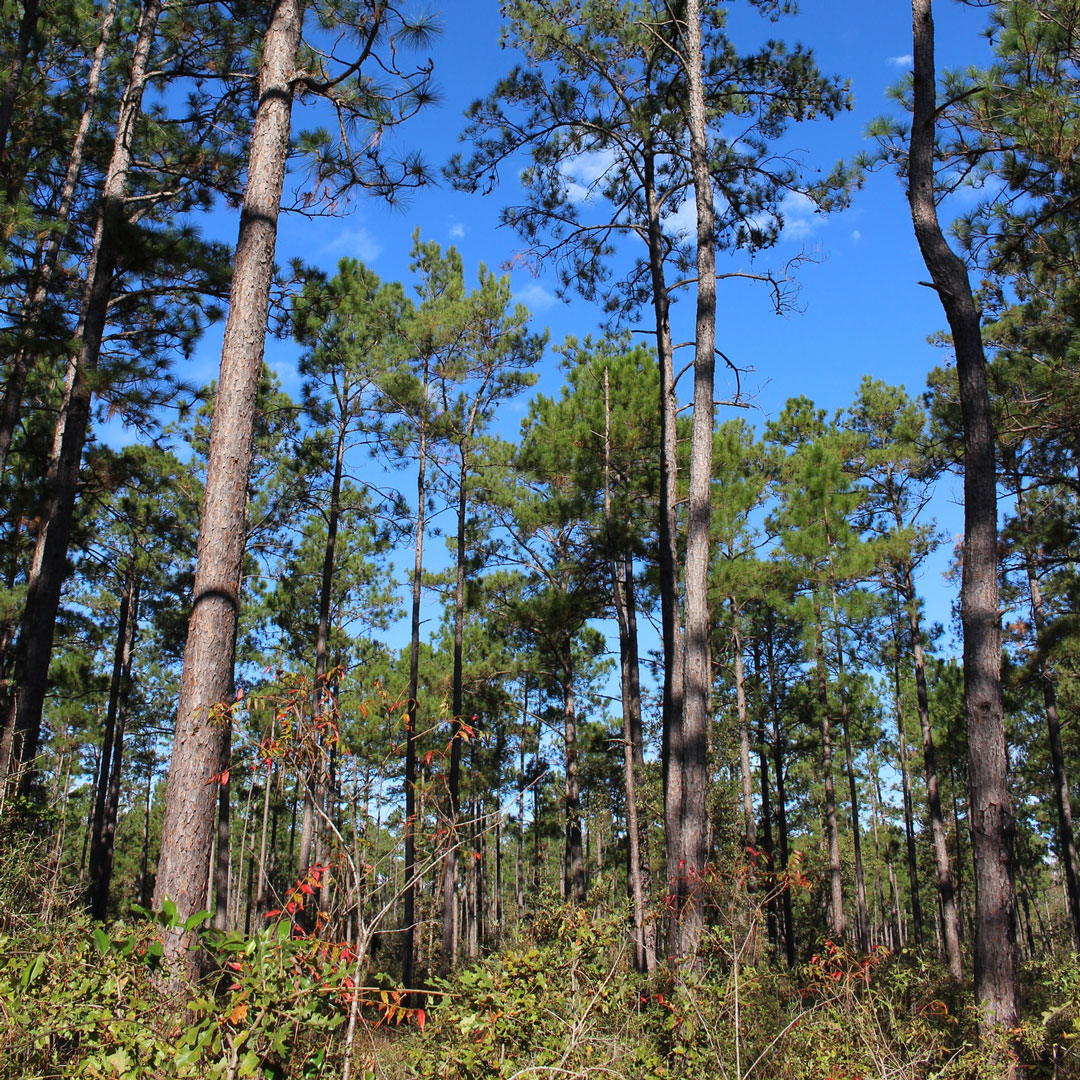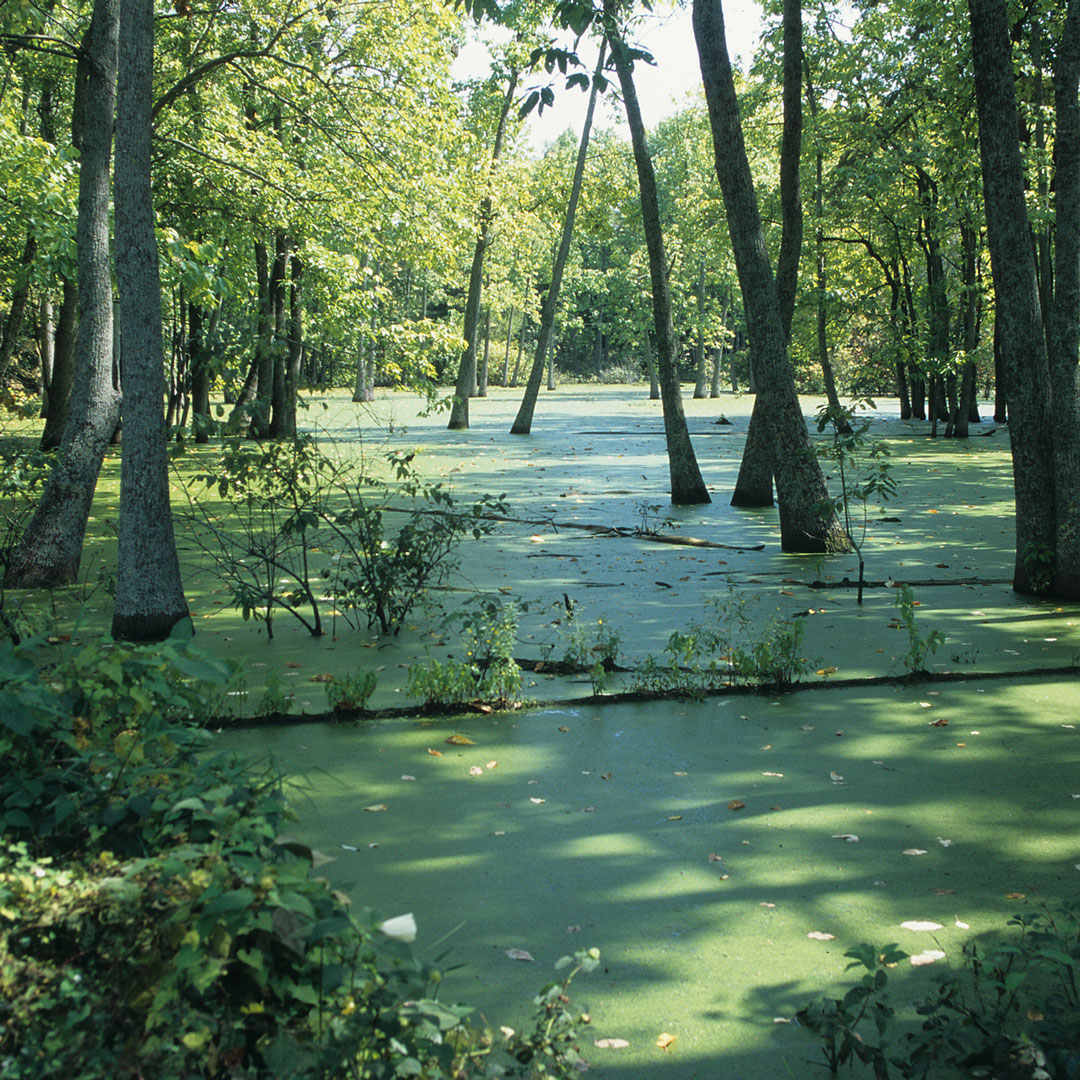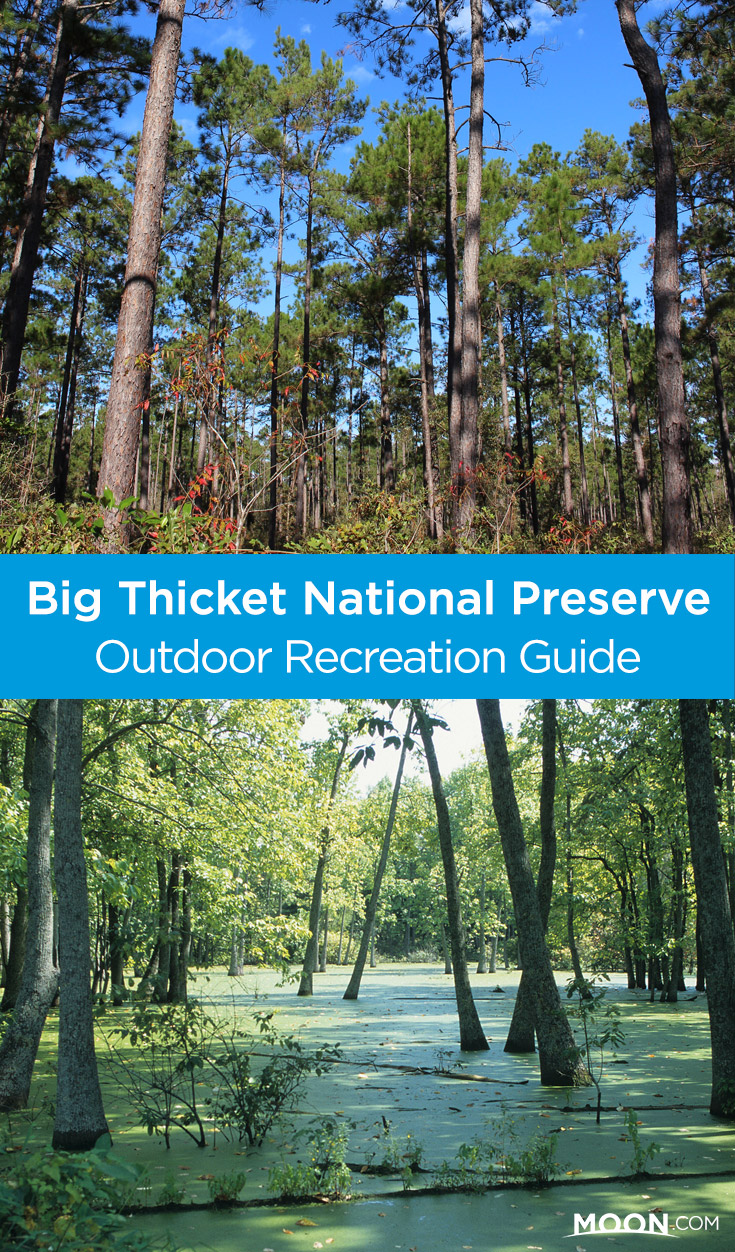Big Thicket Recreation: Hiking, Birding, and More
The Big Thicket National Preserve’s name is somewhat misleading. Sure, there are areas of dense forest seemingly impenetrable by man or beast. But for the most part, this National Park Service property is merely woodsy, with pines, oaks, and swamplands dominating the landscape. It’s what occupies this flora that makes the Big Thicket a national treasure. Outdoor recreation activities include hiking, biking, paddling, and wildlife viewing.
Species from the Gulf Coast, Central Plains, and Southeastern forests coexist with critters from the deserts, bayous, woods, and swamps. Birds from all regions of the country that should never be sharing air space pass through the area on migratory routes. There are 85 tree species, nearly 186 kinds of birds, and 50 reptile species, including a small, rarely seen population of alligators. In short, the tremendous variety of habitats coupled with the thicket’s geographic location results in a unique destination for nature lovers and wildlife enthusiasts.

Sights in Big Thicket
A good place to start is the Big Thicket visitors center (6102 FM 420, 409/951-6725, daily 9am-5pm), seven miles north of Kountze at the intersection of U.S. Highway 69 and FM 420. The center provides brochures and maps, and includes a discovery room with interactive and educational exhibits related to the history and scope of the Big Thicket. Speaking of scope: It can take awhile to get a full grasp of the Big Thicket’s layout, since it consists of nine separate “land units” (basically separate park areas) over an expanse of East Texas. To get your bearings, be sure to view the visitors center’s 30-minute orientation film and talk to an NPS nature guide about taking a short excursion to several of the ecosystems found in the preserve.
Lake Tombigbee
Lake Tombigbee is in one of only three Indian reservations in Texas, the Alabama-Coushatta reservation (936/563-1100). In previous decades, the tribe was much more active with its tourist activities, offering a museum, guided hikes, and cultural events. Although these resources are no longer available, visitors are encouraged to spend time at the reservation’s Lake Tombigbee Campground (936/563-1221 or 800/926-9038).
Lake Tombigbee offers cabins, tent sites, primitive camping sites, full-capacity RV stations, restrooms with bathhouses, swimming areas, and hiking and nature trails. Fishing is also popular on the lake, though visitors are encouraged to bring their own equipment since rental operations are scarce in the area.
Recreation in Big Thicket
Hiking
Those planning to stick around the Big Thicket for a while can take advantage of many recreational opportunities, including hiking, with eight trails offering more than 45 miles of mild terrain through the muggy forest. The ideal time to plan a hike in Big Thicket is in the late fall/early winter or spring, since the summer is brutally hot. The trails truly offer something for everyone, ranging from wheelchair-accessible half-mile loops to an 18-mile cross-forest trek. Of the eight trails, the following offer the best slices of Big Thicket life:
- Beaver Slide Trail: In the southeast corner of the preserve’s Big Sandy Creek Unit, this 1.5-mile trail encircles several ponds formed by old beaver dams. The towering shaggy-barked cypress trees are another main attraction.
- Kirby Nature Trail System: This group of trails offers a lot of flexibility with distance and environments. A printed guide at the trailhead is a handy item to have in your back pocket, providing basic maps and information about the ecosystems and trails, ranging from a half-mile loop through a cypress slough to a 2.4-mile hike traversing the southern edge of the Turkey Creek Unit.
- Pitcher Plant Trail: For a distinctive trek through diverse ecosystems, take this one-mile trail through a mixed pine forest to a wetland savanna to a mixed hardwood-pine forest. Be sure to keep an eye out for the sundews and pitcher plants as you stroll along the wooden boardwalk.
- Turkey Creek Trail: To get a comprehensive feel for the preserve’s Turkey Creek Unit and its namesake creek, consider hiking this lengthy trail (15 miles long). Environmental highlights include baygalls, floodplains, sandhill pine uplands, and mixed forests.

Biking
Due to the Big Thicket’s remote location, cyclists should bring their own bikes to the preserve (instead of hoping for a nearby rental location). It’s well worth making the effort, however, since a bike will allow you to experience even more of the park’s incredible amount of biodiversity than a mere biped on a hike.
The biggest complaint most cyclists have about the park is its limited access. Bikes are only allowed on the Big Sandy Creek Horse/Bike Trail in the southern portion of the Big Sandy Creek Unit. Fortunately, it’s the Big Thicket’s longest trail, offering 18 miles of beautiful natural scenery. Highlights include a diverse hardwood forest of sweetgum, basket oak, and hornbeam; dense and fragrant upland pine forests; and a mixed area with loblolly pines and beech-magnolia trees. Be sure to check ahead about trail access (it’s occasionally closed during hunting season), and keep an eye and ear out for horses.
Bird-Watching
One of the most popular activities at Big Thicket is bird-watching, and several popular trails, including the Big Thicket Loop and Sundew Trail, offer ideal opportunities for serious and amateur birders, with nearly 185 species in the park either year-round or along one of the two major migratory flyways. Bird migrations peak between March and May, and some of the most sought-after species in the park include the red cockaded woodpecker and the Bachman’s sparrow. In the spring, bird and wildflower enthusiasts flock to the Sundew Trail in the park’s Hickory Creek Savannah Unit to catch sight of a rare brown-headed nuthatch or an eye-catching pitcher plant.
Paddling
The Big Thicket has traditionally been known for its hiking and fishing, but it’s gaining a reputation for its quality paddling opportunities. Canoeists and kayakers are especially fond of the Village Creek area, where they can spend an afternoon or entire day exploring the lush waterway and camping opportunities. Another popular area is the Lower Neches River Corridor, a larger body of water with East Texas-style bayous and swamps leading all the way south to the Gulf of Mexico. Equipment rentals and shuttles are also available—check with the visitors center for a list of currently operating companies.
Backcountry Camping
The Big Thicket is more of a hard-core campers’ destination than a traditional park. There are no developed sites with water and electricity; rather, campers are required to procure a permit for a primitive site. For some, this is an ideal situation, since it offers a true natural getaway without the distractions of a classic campground.
Campers must have a valid Backcountry Use Permit, available for free at the visitors center or headquarters office. Naturalist activities are available with reservations, or on selected weekends. Call 409/951-6725 or visit www.nps.gov/bith to learn about the park and its activities or to find out more about making reservations.
Information and Services
The best place to find out everything you need to know about the Big Thicket (trail maps, boating conditions, nearby restaurants, etc.) is the visitors center (409/951-6725, daily 9am-5pm). It’s seven miles north of Kountze at the intersection of U.S. Highway 69 and FM 420.
For those interested in visiting the Alabama-Coushatta reservation for fishing or camping, call 936/563-1221 or 800/926-9038. For information about the tribe, call 936/563-1100 or visit www.alabama-coushatta.com.
Related Travel Guide
Pin For Later
